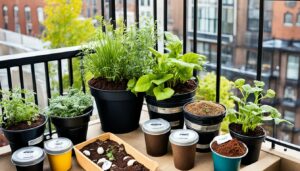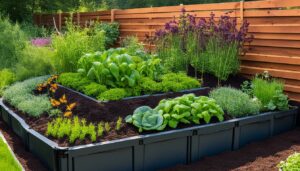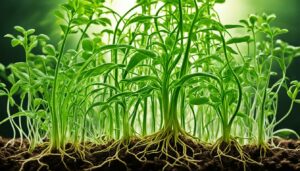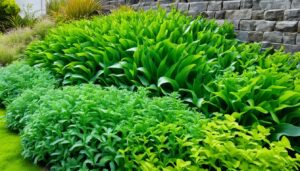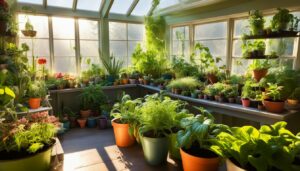In the United States, a staggering 30-40% of food supply is wasted, according to the USDA, with a significant portion of that waste occurring at the consumer level due to spoilage. Battling this issue head-on, root cellaring emerges as a compelling champion of both natural food preservation and sustainability. This traditional practice, which predates modern refrigeration, is on the cusp of a rebirth as environmental enthusiasts and gardeners alike rediscover its value in storing garden produce. Not only does root cellaring provide a year-round bounty of vegetables, but it also does so while sharply reducing energy usage and food waste.
Today’s root cellar is no longer just a relic of the past. Modern interpretations meld time-honored wisdom with current sustainability concepts, offering a food storage method that is as fresh and relevant as ever. From crisp carrots to earthy potatoes, the cool, dark confines of a cellar provide the perfect environment for natural food preservation without a significant carbon footprint.
Incorporating a root cellar into your life isn’t just about smart storage—it’s about embracing a self-reliant lifestyle and making a tangible contribution to reducing the global problem of food waste.
Key Takeaways
- Root cellaring can combat food waste effectively, aligning with sustainability goals.
- This age-old method of storing garden produce uses the earth’s natural conditions to preserve freshness.
- Modern adaptations of root cellars can coexist with contemporary sustainability efforts.
- Choosing to use a root cellar translates to less reliance on electricity for food storage and preservation.
- A proper root cellar can provide access to nutritious, garden-fresh produce throughout the seasons.
- Reviving root cellaring is not just about storage, but also about adopting a self-sufficient and environmentally considerate lifestyle.
Reviving Traditional Food Preservation Methods: Root Cellaring Explained
Root cellaring, an emblem of traditional food preservation methods, taps into the earth’s own storage capabilities to keep vegetables and perishables fresh. Natural underground chambers maintain steady temperatures between 32º to 40ºF and humidity levels of 85% to 95%, conditions ideal for slowing down the spoiling process. These cellars excel in preserving the longevity of stored goods by mitigating ethylene gas release, impeding mold, and minimizing dehydration, which collectively delays maturation and decay.
However, not everyone resides in an area conducive to these natural conditions. Warmer climates challenge the creation of authentic root cellars, calling for alternative methods of preserving harvests. Even for individuals lacking the luxury of an in-ground homemade root cellar, a myriad of constructive options exists. From basement adaptations to detached units or rudimentary subterranean pits, the essence of root cellaring is adaptable to various settings.
Smaller scale endeavors need not be discounted, as they provide valuable solutions for the individual gardener. A routine metal trash can or barrel, buried and insulated, can emulate the microclimate of a traditional root cellar, proving sufficient for safeguarding the winter’s yield in cooler regions. Below is a table detailing several homemade root cellar types and their characteristics:
| Type of Homemade Root Cellar | Characteristic | Benefits |
|---|---|---|
| Basement Partition | Utilizes existing below-ground space | Convenient access, utilizes stable indoor temperatures |
| Standalone Structures | Separate outdoor construction | Customizable size and shape, placed within optimal environmental conditions |
| In-ground Pit or Barrel | Minimal construction, buried container | Cost-effective, replicates conditions of larger cellars on a smaller scale |
These various homemade root cellar designs invite an attainable step towards self-sufficiency and a reduction in food waste. By examining and selecting the right fit for one’s gardening needs, it is possible to maintain the integrity and flavor of the harvest throughout the seasons.
Embracing such timeless and traditional food preservation methods aligns seamlessly with today’s movement towards sustainability and resilience in food sourcing, offering a natural extension to the thoughtful cultivation of one’s garden.
Designing the Perfect Root Cellar: Tips for Optimal Storage Conditions
When embarking on the journey of creating a root cellar, understanding the root cellar requirements is paramount. Every detail from the choice of location to the intricacies of construction plays a vital role in achieving sustainable food storage. A root cellar, constructed and managed correctly, offers an eco-friendly solution for storing fruits and vegetables that can aid in both reducing food waste and preserving the natural taste and nutritional value of your harvest.
Choosing Your Location Wisely
The root cellar’s location is the bedrock of its functionality. Selecting a site involves more than just availability of space; it calls for strategic consideration to avoid potential complications. For those seeking effective root cellar design tips, prioritizing an area with easy access during the frosty months, distance from potential tree root damage, and clear space from any water run-off sources is essential. The coveted northeastern corner of your basement might just be the pristine spot, tapping into the inherent cooling and dark conditions necessary for an efficient root cellar.
Controlling Humidity and Temperature
Success hinges on maintaining a consistently cool temperature and humidity level. Ventilation is your ally here—it refreshes the cellar’s air, battling against unwanted mold and regulating the environment your precious produce thrives in. Ingenious shelving solutions, preferably wooden, ensure that air flow is not restricted, and your fruits and vegetables remain well-preserved and ready to nourish.
Building Materials and Insulation Techniques
The materials you choose can make or break your root cellar’s perseverance against the elements. Trusted allies like concrete and stone stand as stalwart guards against temperature spikes, while modern insulation renders weather woes insignificant. Below is a straightforward guide to the essential materials and insulation suggestions:
| Material/Technique | Benefits | Considerations |
|---|---|---|
| Concrete | Durable, stable temperature maintenance | Requires sealing for moisture resistance |
| Stone | Natural insulation properties | Potentially higher cost, heavier construction |
| Rigid Foam Insulation | High insulation value, moisture resistant | Must be protected from pests |
| Insulated Doors | Prevents air leakage, maintains conditions | Must fit well and include weather stripping |
| Drainage Systems | Protects against water damage and humidity issues | Essential in areas with high water tables |
Keen oversight of these factors not only ensures a robust structure but also provides a sanctuary for your edibles, keeping them fresh and extending their shelf life. Remember, the commitment to building a root cellar is an investment in promoting a sustainable food storage approach, giving you control over what you eat throughout the year.
Root Cellaring, Storing Garden Produce, Natural Food Preservation
In the realm of sustainable agriculture, root cellaring stands out as a testament to natural food preservation. This age-old practice, ideal for storing garden produce, ingeniously utilizes the stable temperatures and humidity found below the earth’s surface. The method is conducive to extending the freshness and nutritional value of the crop, aligning perfectly with the ethos of ecological living and local food consumption.
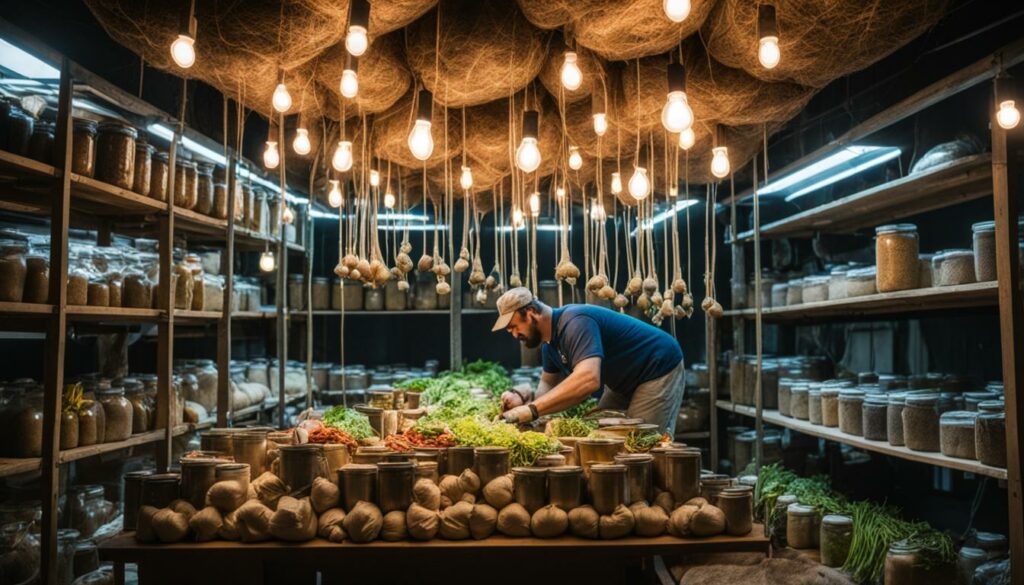
Let’s delve into the essentials of employing root cellaring techniques:
- Selection of the right vegetables and fruits that thrive in cooler, humid conditions
- Timely harvest and proper preparation of produce to ensure longevity
- Strategic organization within the cellar to optimize space and maintain quality
| Vegetable | Optimal Cellaring Temperature (°F) | Relative Humidity (%) |
|---|---|---|
| Potatoes | 35-40 | 90-95 |
| Carrots | 32-40 | 90-95 |
| Beets | 32-40 | 90-95 |
| Apples | 30-40 | 80-90 |
| Cabbage | 32-40 | 80-90 |
Root cellaring not only empowers gardeners to embrace sustainable living by storing garden produce, but it also affords a serene pleasure — the joy of enjoying one’s harvest with the deep, rich flavors left intact months after the growing season has ended. Thus, root cellaring is more than a method; it’s a lifestyle, intertwining tradition with modern aspirations for natural food preservation and self-sufficiency.
Maximizing the Shelf Life of Your Harvest: Best Practices
Proper techniques in handling, curing, and monitoring conditions of your harvest are vital to extend its shelf life within the confines of a root cellar. Understanding the unique requirements of different produce categories ensures fresh, nutritious fruits and vegetables throughout the year, successfully leveraging the benefits of root cellaring to prevent spoilage.
Which Produce Can be Cellared?
Root cellaring can accommodate a varied selection of produce, each with its own storage preferences. Common root vegetables like potatoes, beets, and carrots are cellar staples. Additionally, items such as onions, cabbages, and even apples have a place in the cellar’s cool confines when stored correctly, demonstrating the versatility of this preservation method.
Handling and Curing Your Harvest
The preparation phase before cellaring is crucial. Gentle handling is imperative to minimize damage and subsequent decay. Many vegetables benefit from leaving the protective layer of dirt on their skins, and washing should generally be avoided, as excessive moisture can invite fungal growth. Curing certain vegetables, like potatoes and winter squashes, in moderate temperatures enhances their storage resilience and ensures a longer shelf life.
Monitoring Conditions to Prevent Spoilage
For root cellaring to be effective, continuously monitoring the cellar’s temperature and humidity levels is essential. Equipping your cellar with precise thermometers and hygrometers helps you maintain the desired climatic balance. To curb the development of mold and the spread of ethylene gas, which hastens spoilage, maintain good air circulation and routinely inspect your supplies, removing any produce that starts to deteriorate.

| Vegetable | Optimal Temperature (F°) | Optimal Humidity (%) | Curing Time (Days) |
|---|---|---|---|
| Potatoes | 40-50 | 85-95 | 5-10 |
| Winter Squashes | 50-60 | 50-70 | 10-20 |
| Beets | 32-40 | 95-100 | – |
| Carrots | 32-40 | 90-95 | – |
| Apples | 30-40 | 90-95 | – |
Conclusion
In closing, root cellaring is not just a nod to an age-old tradition but a resolute step toward sustainable food storage. With each passing season, the need to minimize energy consumption and bolster food security without sacrificing the quality of our produce becomes ever more pressing. It is here, in the humble root cellar, that modern aspirations for sustainability marry the wisdom of the past. This marriage proves itself through the efficiency and low environmental impact of utilizing the earth’s natural coolness and humidity to store the abundance of our gardens and farms.
Embracing Sustainable Food Storage
As environmental consciousness takes firmer root in our daily lives, the practice of root cellaring re-emerges as a beacon of self-reliance and ecological responsibility. By adopting this method, individuals take an active role in reducing their carbon footprint, underscoring the importance of natural, sustainable food storage solutions. The root cellar, in its simplicity, offers a dependable and energy-efficient option for anyone seeking to preserve their harvest without depending on the grid.
Reflections on Root Cellaring Success
The revival and root cellaring success stories shared by modern homesteaders, gardeners, and sustainable living enthusiasts illuminate the practicality of this tried-and-true method. The continued relevance of root cellaring stands as a tribute to its reliability in extending the life and freshness of our food. With attention to detail, commitment to monitoring, and gentle handling, your root cellar will indeed become an invaluable ally in the pursuit of preserving nature’s bounty in tune with the rhythms of the earth.



